A Comprehensive Guide to Configuring a Complete Fish Feed Production Line
Introduction: The Engine of Modern Aquaculture
The rapid growth of the global aquaculture industry stands as a critical response to the increasing demand for protein and the stagnation of wild-catch fisheries. At the very core of this success story lies a technologically advanced and efficiently managed input: industrially produced fish feed. The feed is not merely a source of nutrition; it is the single largest operational cost and the primary determinant of growth rates, animal health, environmental impact, fish feed pellet machineand final product quality. Therefore, configuring a fish feed production line is a strategic investment that requires a meticulous, multi-disciplinary approach.
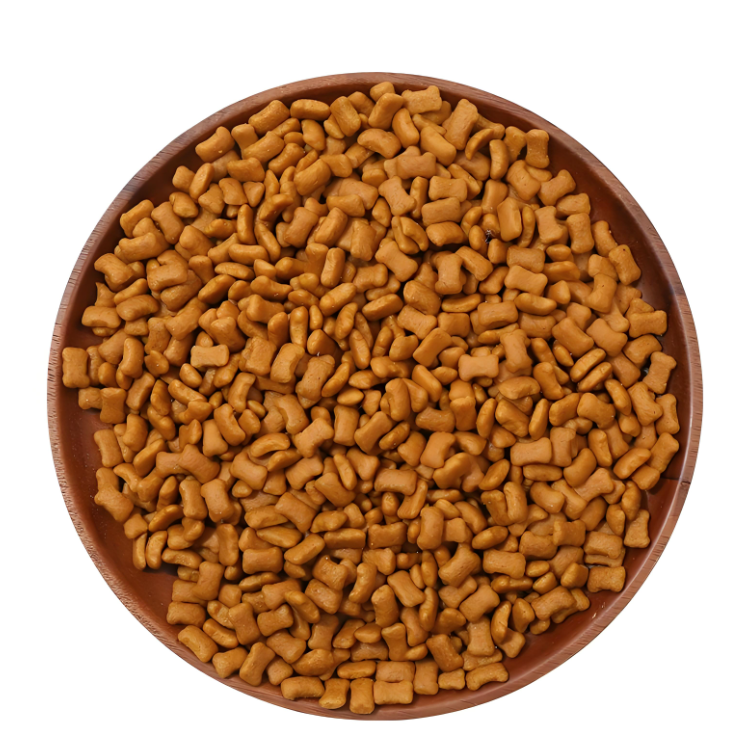
This article serves as a definitive guide to planning, selecting, and integrating the machinery and systems that constitute a complete and modern fish feed production plant. We will move beyond a simple list of equipment and delve into the intricacies of process flow, capacity planning, technology choices (specifically focusing on the pivotal extrusion cooking technology), utility requirements, and automation. Whether the goal is to produce floating, sinking, or slow-sinking pellets for species ranging from tilapia and catfish to premium salmon and shrimp, this guide provides the foundational knowledge required to make informed decisions. The configuration process is broken down into logical phases: Pre-Installation Planning, Core Process Line Configuration, fish feed pellet machineAuxiliary Systems Integration, and Post-Installation Optimization.
Phase 1: Foundational Planning and Design
Before a single machine is purchased, a significant amount of groundwork must be laid. This phase is arguably the most critical, as mistakes made here are costly and difficult to rectify later.
1.1. Defining the Product and Market Scope
The first question to answer is not “What machines do I need?” but “What feed will I produce?” fish feed pellet machineThe answers will dictate the entire configuration.
- Tipo de alimentação:
- Floating Feed: Required for species like catfish, tilapia, and some carp. This demands an extruder capable of achieving high expansion.
- Sinking Feed: For shrimp, marine finfish (e.g., sea bass, bream), and some bottom-feeding species. This can be produced with a simpler pellet mill or a specific type of extruder with a high compression ratio and cutter.
- Slow-Sinking Feed: For species that feed in the water column. This requires precise control over the extrusion and drying process to achieve a specific density.
- Expanded Sinking Feed (High-End): For premium species like salmon. While it sinks, it is extruded to create a porous structure that allows for very high fat coating (~30-35%).
- Particle Size (Pellet Diameter): The production line must be capable of producing a range of sizes, from fine crumbles for fry (0.5 – 1.0 mm) to large pellets for broodstock (8 – 12 mm). This determines the specifications of the grinder, mixer, and most importantly, the die and cutter of the pelleting machine.
- Capacidade de produção: This is typically measured in tons per hour (t/h). Is the target 1 t/h, 5 t/h, or 10 t/h? The entire system, from raw material intake to bagging, must be scaled to this capacity. It is crucial to plan for future expansion.
- Formulation Complexity: Will the line produce a single, fish feed pellet machinesimple formula or switch frequently between high-fat, high-protein, and standard diets? Complex formulations with high liquid inclusion rates require more sophisticated coating systems.
1.2. Raw Material Analysis and Storage Planning
The characteristics of the raw materials directly influence equipment selection.
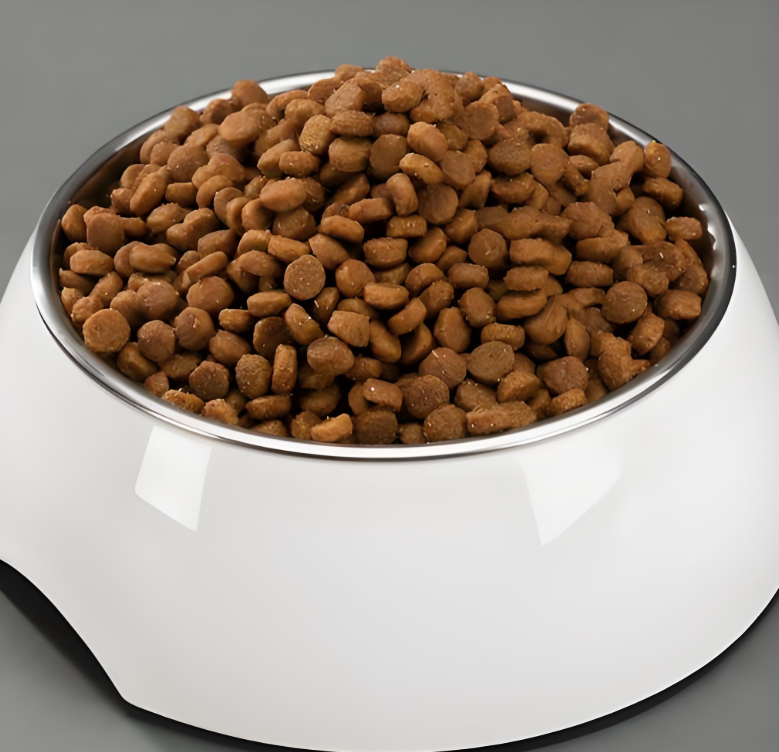
- Ingredient Portfolio: List all potential ingredients: fishmeal, soybean meal, wheat flour, corn, rice bran, vitamin premix, fish oil, etc.
- Physical Properties: Consider bulk density, flowability, moisture content, and oil content. Ingredients like rice bran are abrasive, while molasses is sticky. These properties influence the choice of conveyors (pneumatic vs. mechanical) and storage bin design.
- Storage Capacity and Design: Calculate the required storage volume based on production capacity and supply chain logistics.
- Silos: For large-volume, free-flowing materials like grains and meals. fish feed pellet machineThey are equipped with level sensors and material discharge systems.
- Bags: For micro-ingredients (vitamins, minerals) and smaller-volume materials. A dedicated, climate-controlled bag store is essential.
- Liquid Tanks: For fish oil, phospholipids, and other liquids. Tanks must be insulated and/or heated (for fats that solidify at room temperature) and equipped with agitators to prevent separation.
1.3. Site Selection and Factory Layout
The physical factory is the canvas on which the production line is drawn.
- Requisitos de espaço: A complete line requires space for:
- Raw material receiving and storage
- The main processing floor (typically multi-level)
- Finished product storage and packaging
- Maintenance workshop, laboratory, and office space.
- Process Flow Principle: The layout must follow a logical, linear process flow to minimize cross-contamination and energy loss. The ideal flow is: Raw Material Receiving -> Storage -> Grinding -> Mixing -> Conditioning -> Pelleting -> Drying -> Cooling -> Coating -> Packaging.
- Vertical Layout: This is the most efficient design for gravity assistance. Raw materials are elevated to the top of the building (e.g., to silos). Grinding and mixing happen on upper floors, pelleting in the middle, and drying/cooling/coating on lower levels, with final product at ground level for bagging. This reduces the need for horizontal conveyors.
- Horizontal Layout: More common for smaller capacities or where building height is restricted, but requires more mechanical conveying.
- Utility Requirements: The site must have reliable access to:
- High-Capacity Electrical Power: Extruders, grinders, and air compressors are major power consumers. fish feed pellet machineVoltage requirements (e.g., 380V, 480V) must be confirmed.
- Água: For steam generation and process cooling.
- Caldeira: A reliable steam boiler is essential for conditioning and extrusion. The boiler capacity (in kg of steam/hour) must match the production line’s demand.
- Compressed Air: Needed for pneumatic gates, actuators, and control systems.
Phase 2: Configuring the Core Processing Line
This is the heart of the operation, where raw materials are transformed into finished pellets. We will follow the process step-by-step.
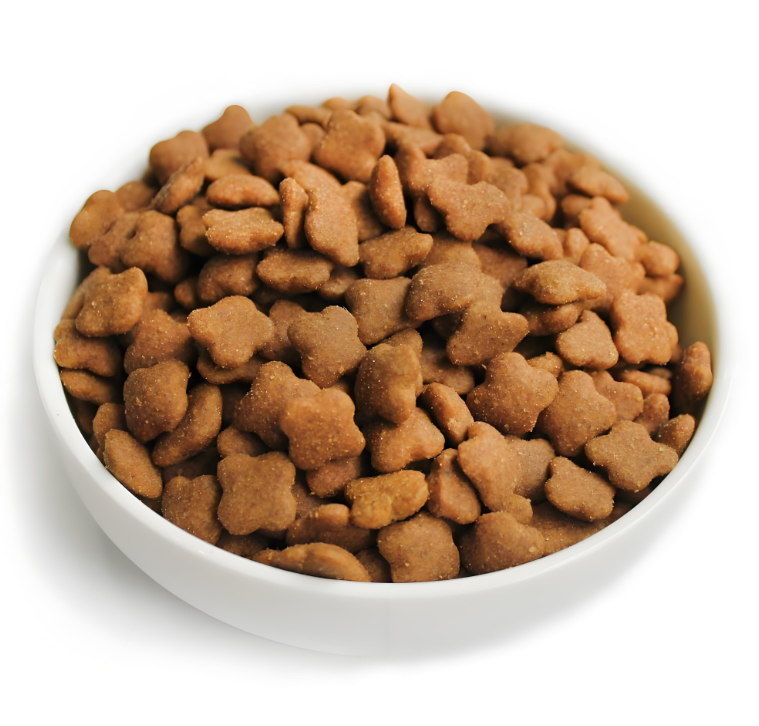
2.1. Raw Material Receiving and Pre-Cleaning
- Equipamentos: Receiving pit, dump hopper, pre-cleaner (sifter/aspirator), bucket elevator or pneumatic conveyor.
- Configuration Details: Incoming trucks unload materials into a receiving pit. A magnet is often placed here to remove tramp metal. Materials are then conveyed vertically via a bucket elevator to a pre-cleaner. This machine uses sieves and air aspiration to remove dust, stalks, stones, and other impurities, protecting downstream equipment.
2.2. Grinding System (Particle Size Reduction)
The goal is to achieve a fine, uniform particle size for optimal mixing, digestion, and pellet quality.
- Key Equipment: Hammer Mill.
- Selection Criteria:
- Screen Area: Determines throughput. Larger screen area allows for higher capacity and finer grinding.
- Horsepower: Directly related to capacity. A 5 t/h line may require a 150-200 kW hammer mill.
- Screen Hole Size: This is the primary determinant of final particle size. For most fish feeds, a screen with 0.8 – 1.5 mm holes is standard. A finer screen (e.g., 0.6 mm) is used for shrimp feed.
- Auxiliary Systems:
- Pneumatic Conveying System: This is the preferred method to transport the ground material from the mill outlet to the next stage. It consists of a fan, cyclone separator (to separate air from the material), and rotary airlock valves. The airflow also cools the ground product.
- Dust Collection System (Bag Filter): A mandatory system connected to the hammer mill and other dusty points to ensure a clean working environment and prevent product loss and explosion risks.
- Selection Criteria:
2.3. Weighing and Mixing System (The Art of Homogeneity)
This is where the formula is created. Precision and uniformity are paramount.
- Weighing System:
- Configuração: A batching system consists of several micro-ingredient scales for minor components (premixes) and large batching scales for major components (soybean meal, wheat, etc.). The scales are mounted above the mixer.
- Technology: Modern systems use load cells for high accuracy. The entire process is controlled by a Programmable Logic Controller (PLC) which automatically discharges each ingredient in sequence according to the recipe.
- Mixing Machine:
- Type: Double-Shaft Paddle Mixer or Twin-Shaft Ribbon Mixer. These are preferred for their short, highly efficient mixing time (typically 2-4 minutes per batch) and excellent homogeneity.
- Selection Criteria:
- Batch Capacity: Measured in liters (e.g., 2000L, 5000L). The capacity must match the hourly production rate. For a 5 t/h line, a 2000L mixer (holding ~1 ton per batch) running 5-6 batches per hour is suitable.
- Mixing Uniformity: The manufacturer should provide a Coefficient of Variation (CV) of less than 5% for a tracer like salt.
- Liquid Addition: The mixer should have ports for adding liquids (oil, molasses) during the mixing cycle to further improve uniformity.
2.4. Conditioning and Pelleting – The Critical Junction
Here, the path diverges based on the type of pellet required.
Option A: The Pellet Mill for Dense Sinking Pellets
- Conditioning: The mixed powder (“mash”) enters a single-shaft conditioner where steam is added to raise the temperature to 70-85°C and moisture to 16-18%. This partially gelatinizes the starch, acting as a binder.
- Pellet Mill:
- Function: The conditioned mash is fed into a “die and roller” assembly. Two or three rollers press the mash through a thick, perforated steel die. fish feed pellet machineThe friction and pressure cook the mash further and form it into dense strands, which are cut to length by external knives.
- Selection:
- Power: Ranges from 75 kW to over 250 kW.
- Die Specification: The die’s hole diameter (2-12 mm) and compression length (the thickness of the die) determine pellet size and hardness. A longer compression length produces a harder, more durable pellet.
Option B: The Extruder for Floating or High-Fat Sinking Pellets
This is the technology of choice for most modern, high-performance fish feed lines.
- Pre-Conditioning: Often a dual-shaft conditioner is used, providing longer retention time and more efficient steam and liquid addition than a single-shaft unit.
- The Expander (Optional but Recommended): Located between the conditioner and extruder, the expander subjects the mash to higher pressure, temperature, and shear, achieving near-total starch gelatinization. This results in superior water stability and pellet durability.
- The Twin-Screw Extruder:
- Why Twin-Screw? While single-screw extruders exist, twin-screw extruders offer vastly superior control, flexibility, and ability to handle high-fat and difficult-to-cook recipes. They are self-wiping, reducing clogging and ensuring a uniform residence time for all particles.
- Configuration Components:
- Feeding System: A loss-in-weight feeder ensures a consistent and precise mass flow into the extruder.
- Seções de barril: The barrel is composed of modular segments that can be configured with different screw elements (conveying, kneading, reverse) to manipulate the shear and pressure profile.
- Cabeça do molde: The assembly at the end of the barrel that holds the die plate. The design of the die holes (length, diameter, inlet shape) is critical for controlling expansion and pellet shape.
- Cortador: A high-speed rotary cutter located just outside the die face. The cutter speed is synchronized with the extruder throughput to determine pellet length.
- Control Parameters: A modern extruder is controlled by monitoring and adjusting:
- Specific Mechanical Energy (SME): The mechanical energy input per unit of mass. It is a key indicator of product quality and is controlled by screw speed, configuration, and feed rate.
- Perfil de temperatura along the barrel.
- Die Pressure and Temperature.
2.5. Post-Pelleting Processing: Drying, Cooling, and Coating
The pellets exiting the extruder or pellet mill are soft, hot, and moist. fish feed pellet machineThey are not yet stable for storage.
- Dryer:
- Type: Multi-Pass Dryer. Pellets are conveyed horizontally on stacked, moving belts while hot air is forced through the pellet bed vertically.
- Configuração: The dryer is typically heated by a steam radiator system. The temperature and air flow are carefully controlled in different stages to avoid “case-hardening” (forming a hard crust that traps moisture inside). The goal is to reduce moisture from ~25-30% to ~10-12%.
- Cooler:
- Type: Counter-Flow Cooler. Ambient air is drawn upwards through a column of pellets, which move downwards by gravity. fish feed pellet machineThis is the most efficient method, bringing the pellets to within 3-5°C of the ambient temperature.
- Importância: Cooling is essential before storage or coating to prevent condensation and spoilage.
- Coating System (Fat Applicator):
- Function: To add heat-sensitive liquids (fish oil, vitamins, pigments, attractants) after the drying and cooling process.
- Configuração: The pellets are tumbled in a horizontal drum, and a precise amount of liquid is sprayed through nozzles onto the bed. For high-fat feeds, a Vacuum Coater is used. The drum is sealed and a vacuum is drawn, which pulls air from the pores of the pellets. When the liquid is introduced and the vacuum released, the liquid is sucked deep into the pellet, resulting in much higher and more uniform fat absorption and less surface oil leakage.
2.6. Screening and Packaging
- Peneiras vibratórias: After coating, pellets pass over a series of screens to remove fines (small broken particles) and oversized pellets. The fines are typically routed back to the mixer for reprocessing.
- Weighing and Bagging Machine:
- Type: Automated Open-Mouth Bagging Scale. The machine automatically fills pre-made bags, weighs them to a high degree of accuracy, and then conveys them to a bag closer (sewing or heat-sealing).
- Bagging Material: For fish feed, multi-layer woven polypropylene bags with a plastic liner are standard to prevent moisture ingress and oxidation.fish feed pellet machine
Phase 3: Integrating Auxiliary and Support Systems
A production line is more than just process machines. The supporting cast is vital for efficiency, safety, and quality.
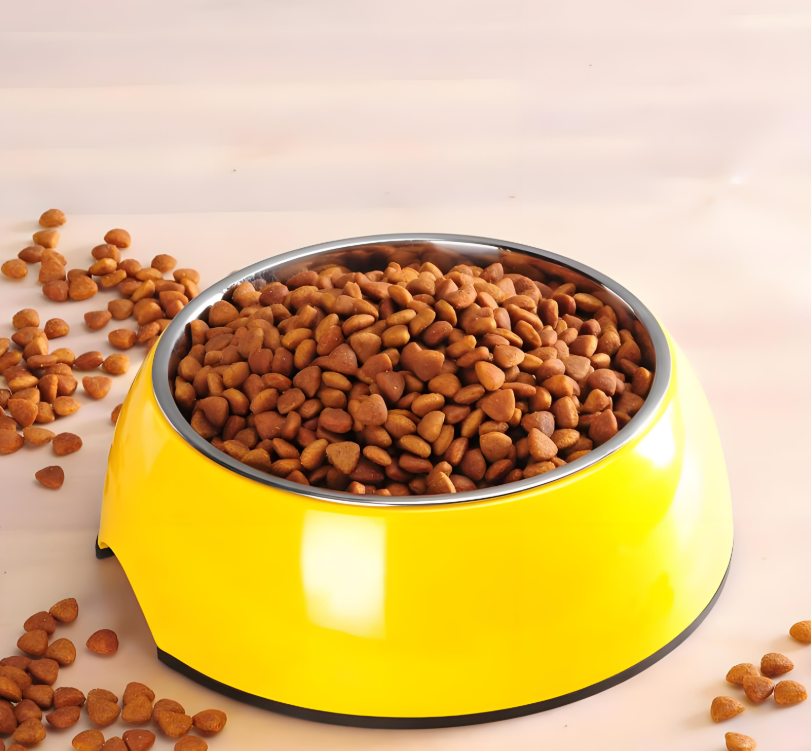
3.1. Electrical Control and Automation System
The level of automation is a key differentiator between a basic and a world-class plant.
- Central Control Panel (PLC/SCADA): A Programmable Logic Controller (PLC) is the brain of the operation. It is programmed to start and stop machines in the correct sequence, monitor motor loads, temperatures, and pressures, and trigger alarms for any deviations.
- SCADA (Supervisory Control and Data Acquisition) software provides a graphical user interface on a computer screen, allowing operators to monitor the entire process, adjust setpoints, and log production data for traceability.
- Variable Frequency Drives (VFDs): Installing VFDs on major motors (extruder, grinder, mixer) allows for soft starting (reducing mechanical stress and power surges) and precise speed control to optimize process parameters.
3.2. Utility Systems
- Boiler Plant: Must supply clean, dry steam at the required pressure. A water softener plant is often needed to treat feedwater to prevent scaling in the boiler and process equipment.
- Air Compressor: Provides clean, dry compressed air for pneumatic cylinders and instruments.
- Sistema de coleta de poeira: A central dust collector (a large bag filter) with a network of ducts connected to all dust generation points (receiving, grinding, mixing, packaging) is essential for plant hygiene and safety.
3.3. Laboratory and Quality Control
A well-equipped in-house lab is non-negotiable for ensuring consistent quality.
- Essential Equipment:
- NIR (Near-Infrared) Analyzer: For rapid analysis of moisture, protein, fat, and fiber in raw materials and finished feed.
- Pellet Durability Tester (e.g., Holmen Tester): To measure the physical strength of the pellets.
- Water Stability Test Apparatus: For shrimp feed, to ensure pellets remain intact for the required time.
- Standard Lab Equipment: Ovens, moisture analyzers, scales, and glassware for standard chemical analyses.
Phase 4: Installation, Commissioning, and Operational Excellence
4.1. Installation and Commissioning
This phase is typically managed by the equipment supplier.fish feed pellet machine
- Foundation and Erection: Heavy machinery requires solid concrete foundations. The supplier’s engineers will supervise the installation and alignment of all equipment.
- Commissioning: This is the “first run.” The supplier’s team will start up the line, tune the equipment (e.g., adjust conveyor speeds, calibrate scales, optimize extruder parameters), and train the client’s operators.
- Performance Guarantee Test: The line is run for a sustained period to verify it meets the guaranteed capacity, pellet quality, and energy consumption metrics.
4.2. Operational Management and Maintenance
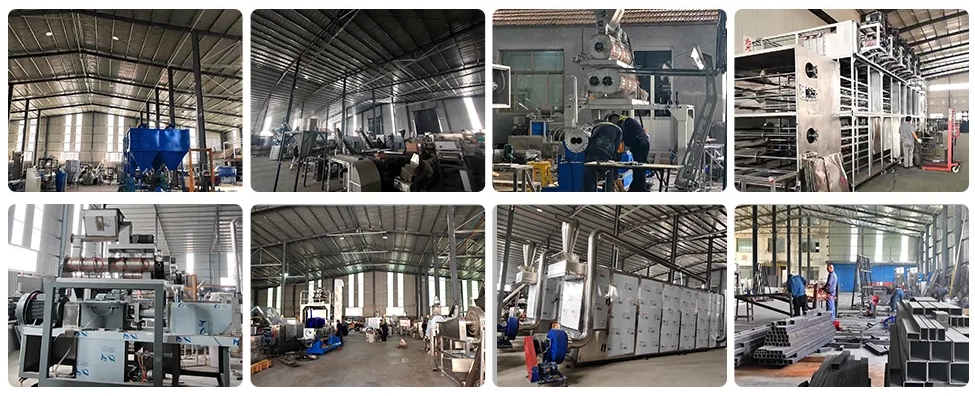
- Preventive Maintenance (PM): A rigorous PM schedule is the key to high uptime. This includes daily greasing, checking for wear (especially on hammer mill screens and extruder dies), and periodic overhauls.
- Spare Parts Inventory: Maintaining a critical spare parts inventory (seals, bearings, dies, rollers, V-belts) prevents prolonged production stoppages.
- Treinamento da equipe: Continuous training for operators, mechanics, and quality control technicians is essential for safe and efficient operation.
Configuring a complete fish feed production line is a complex but highly rewarding engineering project. It is a symphony where mechanical engineering, process control, chemical engineering, and animal nutrition must play in perfect harmony. There is no single “best” configuration; the optimal line is a custom-built system tailored to specific product goals, raw material constraints, and economic realities.

By following a disciplined approach—starting with a clear product definition, moving through a detailed process design, selecting robust and appropriate technology, and integrating sophisticated control systems—an investor can build a facility that is not just a feed mill,fish feed pellet machine but a strategic asset capable of producing high-quality, sustainable, and profitable feed for the dynamic global aquaculture industry. The initial investment in careful planning and quality equipment pays dividends for decades in the form of operational reliability, product consistency, and long-term business viability.







